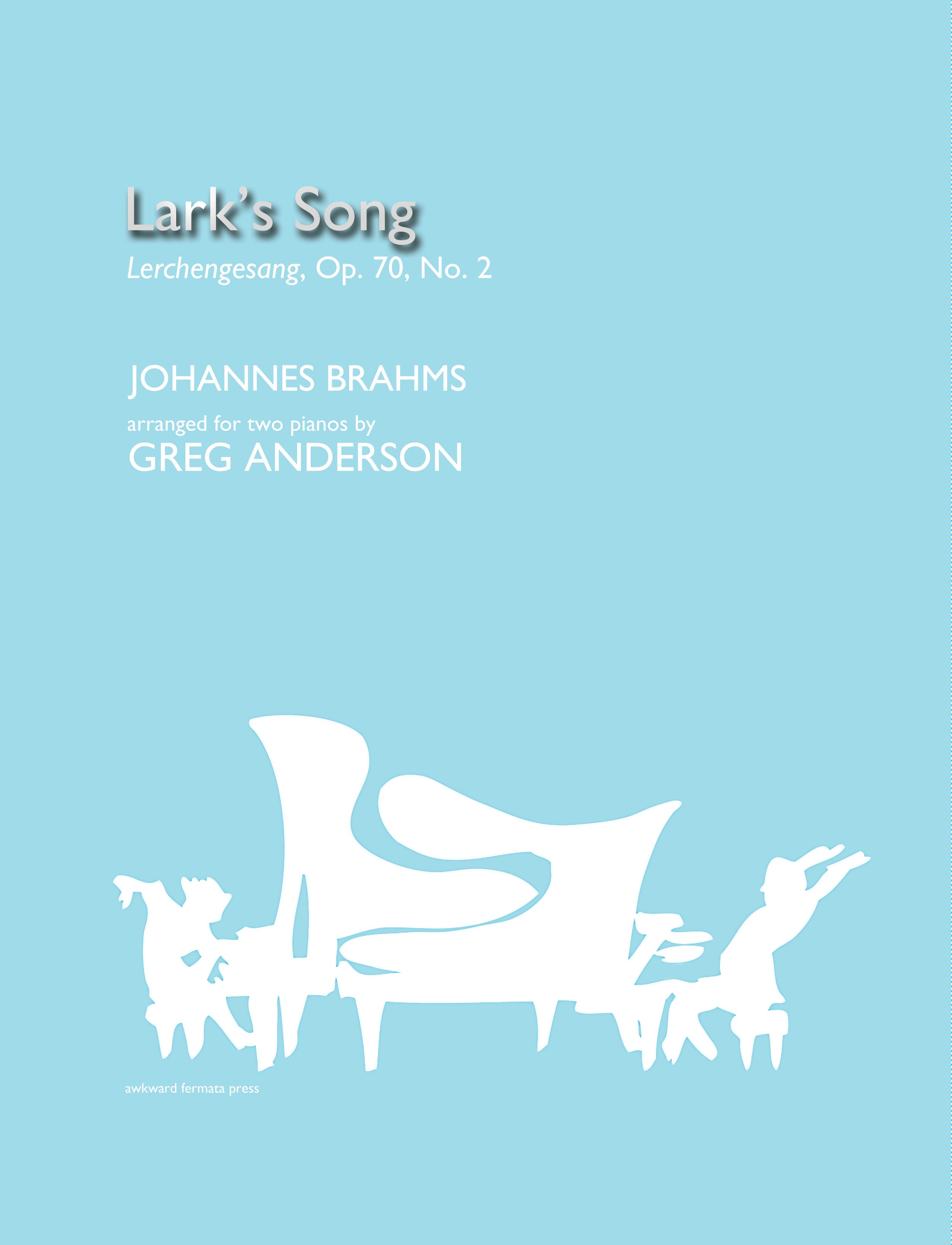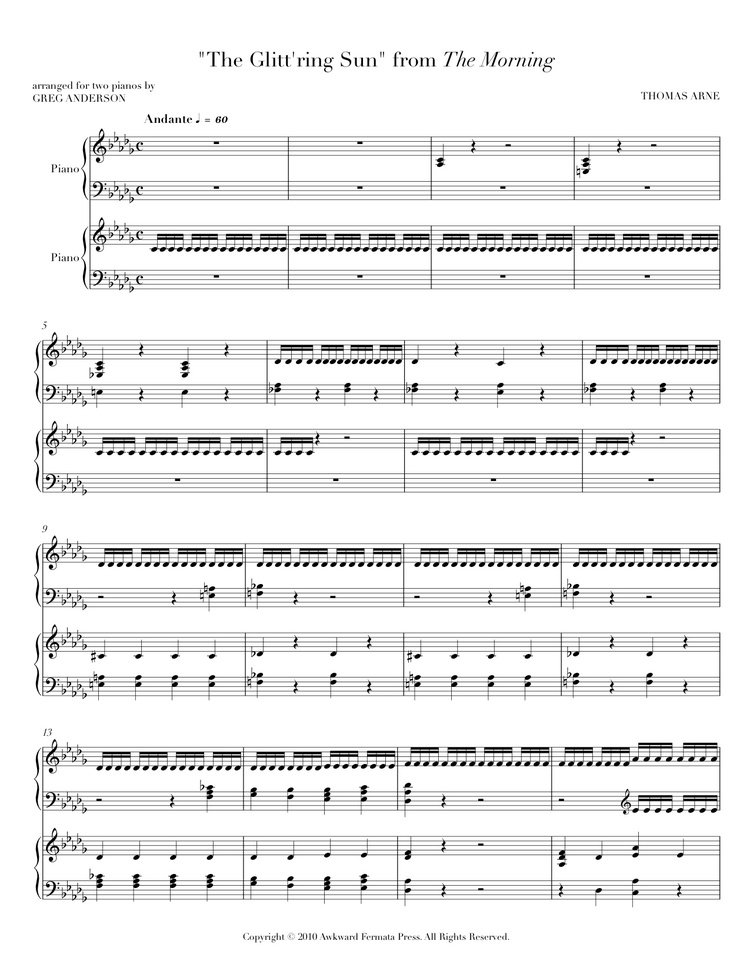Description
The Cuckoo in Sussex by Louis-Claude Daquin, arranged for two pianos by Greg Anderson / Full score / Difficulty: Intermediate-advanced / Duration: 3 minutes / Pages: 4 / Copyright: 2007 / Work number: 021 / Appears on the album Reimagine / Spotify / Apple Music
Program Notes
In 1735, Louis Claude Daquin captured the cuckoo’s charm in a concise harpsichord miniature. In this recomposition, “The Cuckoo in Sussex,” multiple cuckoos answer one another across two pianos, and a subtle chromatic haze pervades the texture—as though a gentle breeze or the slow pull of hypnosis has blurred the edges of time itself.
The arrangement’s inspiration came from a letter to the editor published in the London Times in 1923. In precise, self-important prose, John Clark documented the first cuckoo of spring—an event that, until then, I had never fully understood as a symbol of time’s passage.
“Sir,
Some of your readers may be interested to know that the cuckoo was heard at 7 o’clock this (Tuesday) morning. It was in a wood just outside my house.
Yours faithfully,
John Clark
Rockmead, Halland, Sussex, March 22, 1923.
Beyond its quaint charm, Clark’s report revealed how deeply the cuckoo has been woven into our calendars: its call marking spring’s arrival, its clockwork chime measuring each hour. In The Cuckoo in Sussex, time itself seems to fracture and re-assemble—Daquin’s original score often lives on in one piano, while the other adds a lamenting counterpoint of echos, song, and drifting chromatic clouds.
Composed in 2007, this arrangement suspends us among four eras: Daquin’s 1735 pastoral world, Clark’s methodical 1923 spring-watch, the arrangement’s own modern genesis, and whatever moment you now inhabit. As the two pianos intertwine, imagine yourself inside the clockwork of universal time—each “cu-ckoo” building a dreamlike bridge from past to present, from hour to hour, from one spring to the next.
— Greg Anderson











